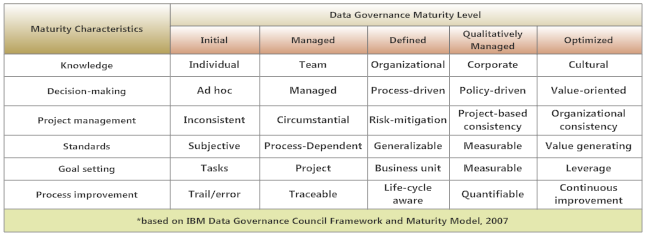Clients I work with struggle with many issues. Among these, two often rise to the top.
- How do we show the impact of metadata on our business?
- Do we need our own metadata standard? Alternatively, should we use industry standards?
This post covers my approach to answering these questions.
To begin with, I ask them how they define metadata. And most often, they give me the usual tautology: metadata is data about data. You can do better than that! A more meaningful alternative is to say that metadata is what allows data to be searched, understood, and consistently used within a company.
Metadata provides data with a context that enables users to think about and share data in useful ways. In short, metadata transforms data into information. It enables a complex organization to make informed decisions and take appropriate actions because we can look at our collective experience through a common framework of understanding.
The intellectual endeavor of managing "metadata" is at the core of all information and knowledge related work. Taxonomy is dedicated to the practice of producing logical categorization models, and therefore at the very heart of creating metadata systems. Human-understandable taxonomies provide the words and relationships needed to access and use information.
It is important to document and get buy-in on metadata standards. As a standard for organizing information as it is shared by many people and devices, the metadata system must be agreed to by all key stakeholders. Metadata standards are an artifact of group decision making in response to the dynamic organizational environments and the need to capture information needed to succeed.
When metadata is understood as critical to sharing information, we can then point to where better management of metadata can help the organization avoid information chaos. The process of developing and maintaining metadata as an organizational standard is called governance.
To evaluate how well an organization is managing its data and data standards, IBM Data Governance Council produced a data maturity framework and maturity model. This model provides a heuristic framework for evaluating organizational needs for governing data, revolves around five central concepts, starting with an Initial/Reactive phase and ending with an Optimizing/Continuous phase. I recommend the model as a structure for thinking through where we can affect the organization by improving metadata management.

The use of standards has become something of a mantra for the developer community and for organizations in generally, as they are the essential framework for data exchange, interoperability, and technology migration. Standards contribute to these objectives by providing a conceptual framework and detailing requirements for data structure and quality assurance.
The desire to have common, interoperable standards has resulted in a proliferation of generic standards documents by standards organizations, such NOIS, OASIS, ISO, W3C, and by industry platform leaders, such as Adobe and Microsoft. Though based on deep insights into the topics, platforms, and technologies addressed, the plethora of standards has led to the complaint that there is a metadata chaos. Not only are there many choices, but the standards can create implementation burdens and issues when an enterprises business model differs from that used to develop the standard. From a business perspective, standards are standards only to the extent they have pragmatic value for organization.
Pragmatism in determining what metadata is required and how the resulting standard is applied is the quintessential business of a governance process. In the governance process, as with any other management task, an organization establishes roles, accountabilities, communication pathways, and informed stakeholder buy-in that leads to a pragmatic approach.
In part 2, I will discuss further the role of taxonomy and information modeling in reducing information chaos.
